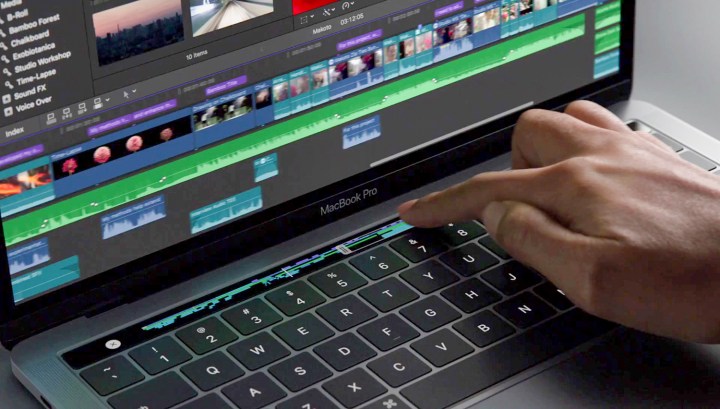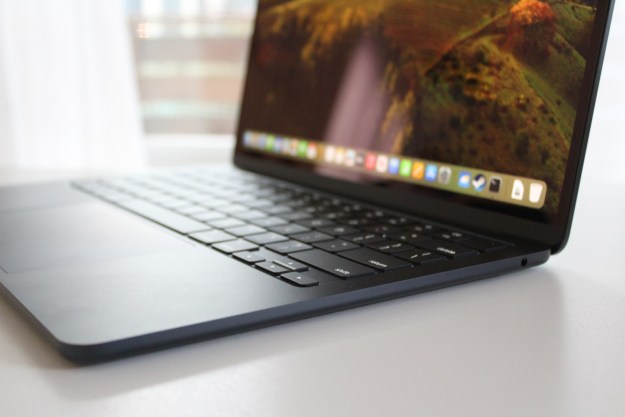Today’s Apple Unleashed event brought with it several interesting announcements, including the release of the two new MacBook Pros. These notebooks are an upgrade over the existing versions of the MacBook in every possible way, but there’s something they actually lose — the Touch Bar. Why did Apple finally choose to get rid of a feature it was once so proud of?
Introduced five years ago, the Touch Bar was certainly a novelty on the laptop market. The narrow touch display, located right above the keyboard, was meant to revolutionize the whole user experience. Intended as a quick connection between the typing we know from laptops and the touchscreens we use on our phones, the Touch Bar certainly seemed like something Apple had great plans for … until it didn’t.
Great on paper, not in reality

The downfall of the Touch Bar started almost as soon as it was invented. It certainly made a splash when it was released with the 2016 MacBook Pro. According to Apple, the little strip of a touchscreen was meant to offer a dynamic experience that let users interact with the content on their main screen. It was also meant to add ease of access to certain apps, functionalities within those apps, and even things like volume control.
While the Touch Bar sounded great as a concept — although not everyone was sold on it, even from the start — Apple did very little to follow up on it. Surprisingly, there has never been a single MacOS update that introduced new Touch Bar features or capabilities.
The brand also didn’t really advertise the feature much beyond its initial release. This made it easy for it to slip away unnoticed, and most people who own a MacBook Pro never even bothered to use the Touch Bar. Part of it may be the lack of advertising and support from Apple, but another part is the fact that the Touch Bar was simply annoying to use for most people.
Most of us have learned to use keyboards a certain way, though laptop users adapted to the use of a trackpad, as well as its usual location on MacBooks. But the fact is, during daily use, our hands are rarely near where the Touch Bar was. In addition, the combination of typing and touch control was just awkward to use for some, further putting them off the technology.

The awkwardness of the Touch Bar was especially bothersome in its early years. Before MacBook Pro users got used to the placement of it, many ran into issues with accidentally brushing the Touch Bar while typing something on the upper half of the keyboard. The result was often a nuisance, causing website refreshes and the closing of files. Apple patched this later on, but this didn’t make the Touch Bar’s start any better.
The idea of volume controls on the Touch Bar was interesting, but that too turned out to be rather finicky when compared to a regular keyboard and mouse. Apple also promised that the Touch Bar would be a spot for hidden app information, but unfortunately, this also proved to be rather ineffective due to the bar’s placement. Ultimately, many people sought ways to disable the Touch Bar rather than trying to adapt to it.
Limited reach
There’s one more nail in that coffin — the fact that the Touch Bar was only accessible to the users of MacBook Pros. This limited its reach, and as a result, likely curbed its potential quite a bit.
At its release, the Touch Bar seemed like a fancy, shiny new gadget that many were eager to try. Ultimately, it’s hard to tell what exactly led to its demise, but it’s also hard to deny that it proved to be a disappointment for many. Some were quite vocal about their dislike for it and others just didn’t bother to use it. The end result remains the same — Apple was led to the decision to ax it.
The new 14-inch and 16-inch MacBook Pro notebooks no longer have a Touch Bar. It is replaced by a row of physical keys that blend well with the keyboard. Although it may be missed by some, it seems that the removal of the Touch Bar will likely end up being less controversial than its introduction.
You can still get it on the 13-inch MacBook Pro that Apple still sells. But one thing is for sure — Apple is not likely to bring it back anytime soon.
Editors' Recommendations
- These 6 tweaks take MacBooks from great to nearly perfect
- If you buy one MacBook Air alternative, make it this one
- The case for buying the M2 MacBook Air over the M3 model
- Which color MacBook should you buy? Here’s how to pick
- Why you should buy a MacBook Air instead of a MacBook Pro




